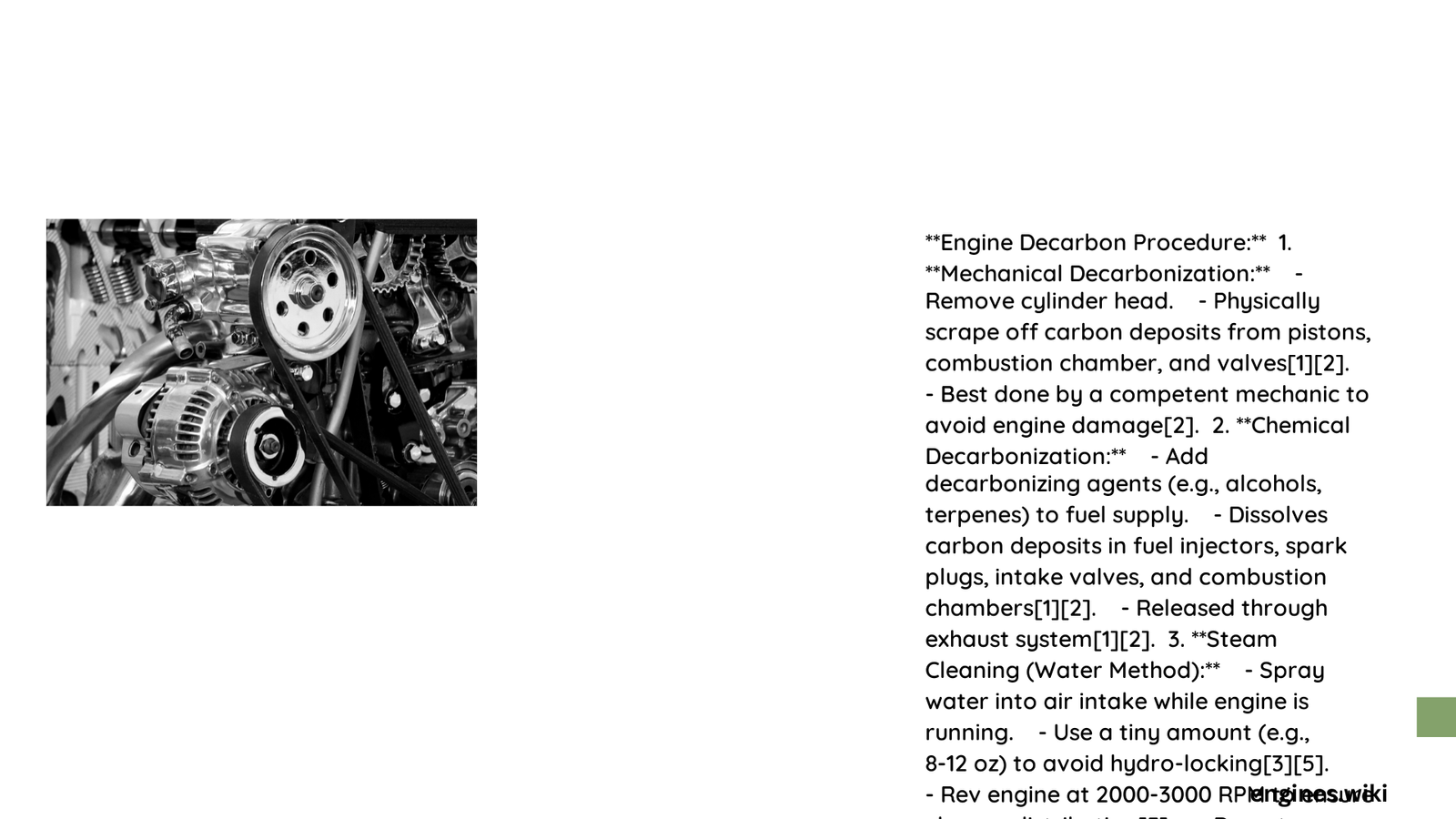Engine decarbonization is a critical maintenance procedure that removes harmful carbon deposits from internal engine components, restoring performance, improving fuel efficiency, and preventing potential mechanical failures. By systematically eliminating carbon buildup through chemical or mechanical methods, vehicle owners can extend engine life, reduce maintenance costs, and ensure optimal engine functionality across various driving conditions.
What is Engine Carbon Buildup?
Carbon buildup occurs when unburned fuel and combustion byproducts accumulate on critical engine components like valves, pistons, and cylinder heads. This gradual process can significantly impact engine performance, leading to:
- Reduced fuel efficiency
- Decreased power output
- Increased emissions
- Potential long-term engine damage
Chemical vs. Mechanical Decarbonization Methods
| Method | Pros | Cons | Recommended Frequency |
|---|---|---|---|
| Chemical | – Quick process – Less expensive – Minimal disassembly |
– May not remove stubborn deposits – Limited effectiveness |
Every 30,000-50,000 miles |
| Mechanical | – Thorough cleaning – Removes heavy deposits |
– Labor-intensive – Higher cost – Requires expertise |
Every 60,000-100,000 miles |
How to Perform Chemical Engine Decarbon Procedure?

Preparation Steps
- Select appropriate decarbonization product
- Ensure proper ventilation
- Gather necessary tools:
- Chemical cleaning solution
- Funnel
- Protective gloves
- Clean rags
Application Process
- Warm up engine to operating temperature
- Add decarbonization product to fuel system
- Gradually accelerate to specified RPM ranges
- Maintain specific engine speeds for recommended duration
- Allow engine to idle and cool down
What Tools Are Required for Mechanical Decarbonization?
Essential mechanical decarbonization tools include:
– Plastic/wooden scrapers
– Wire brushes
– Solvents
– Fine steel wool
– Torque wrench
– Protective equipment
How Often Should Engine Decarbonization Be Performed?
Decarbonization frequency depends on:
– Vehicle make and model
– Driving conditions
– Fuel quality
– Maintenance history
General Recommendations:
– Gasoline engines: Every 30,000-50,000 miles
– Diesel engines: Every 50,000-75,000 miles
Advanced Decarbonization Techniques
Hydrogen-Based Cleaning
- Uses electrolysis to generate cleaning gases
- Penetrates microscopic carbon layers
- Minimal risk of component damage
Dry Ice Blasting
- Non-abrasive cleaning method
- Removes carbon without surface degradation
- Environmentally friendly approach
Potential Risks of Neglecting Decarbonization
Failing to address carbon buildup can lead to:
– Reduced engine efficiency
– Increased repair costs
– Potential engine failure
– Higher fuel consumption
Professional vs. DIY Approach
| Approach | Complexity | Cost | Effectiveness |
|---|---|---|---|
| DIY | Moderate | Low | Variable |
| Professional | Low | High | Consistent |
Key Considerations Before Decarbonization
- Verify vehicle warranty
- Consult manufacturer recommendations
- Choose appropriate method based on vehicle type
- Consider professional assessment for complex cases
Preventive Maintenance Tips
- Use high-quality fuel
- Perform regular oil changes
- Avoid short, infrequent trips
- Use fuel system cleaners periodically
- Monitor engine performance indicators
Reference:
– Vehicle Engine Maintenance Guide
– Professional Decarbonization Techniques
– Automotive Performance Optimization
